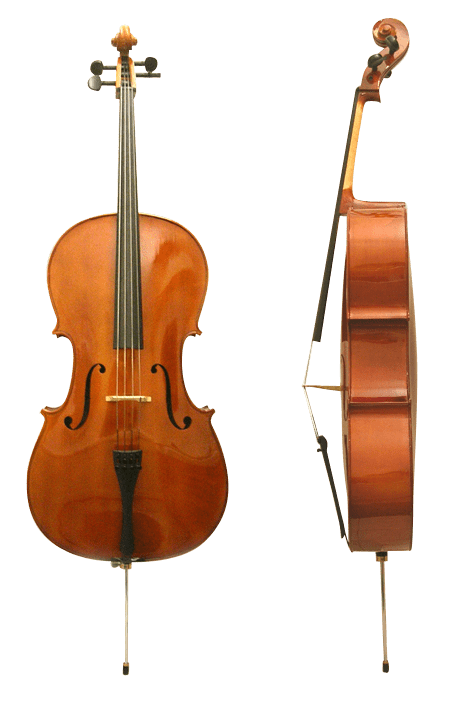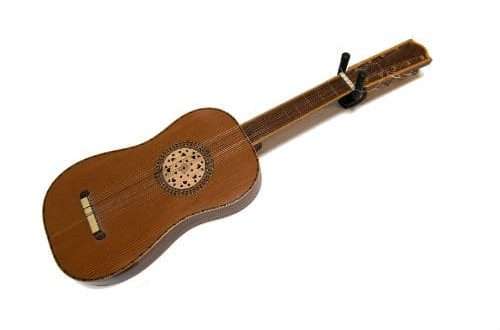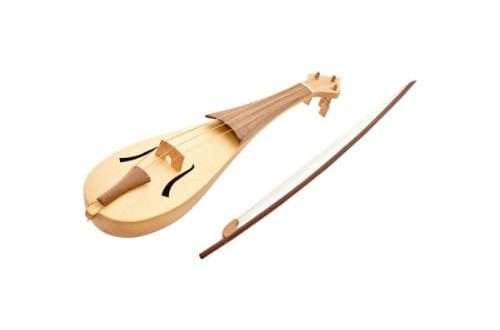
Cello: description of the instrument, structure, sound, history, playing technique, use
Contents
The cello is considered the most expressive musical instrument. A performer who can play on it is able to successfully solo, no less successfully perform as part of an orchestra.
What is a cello
The cello belongs to the family of stringed bowed musical instruments. The design acquired a classic look thanks to the efforts of Italian masters, who called the instrument violoncello (translated as “little double bass”) or abbreviated as cello.
Externally, the cello looks like a violin or viola, only much larger. The performer does not hold it in his hands, puts it on the floor in front of him. The stability of the lower part is given by a special stand called a spire.
The cello has a rich, melodious sound. It is used by the orchestra when it is necessary to express sadness, melancholy, and other deeply lyrical moods. Penetrating sounds resemble a human voice coming from the depths of the soul.
The range is 5 full octaves (starting from “to” a large octave, ending with “mi” of the third octave). The strings are tuned an octave below the viola.
Despite the impressive appearance, the weight of the tool is small – only 3-4 kg.
What does a cello sound like?
The cello sounds incredibly expressive, deep, its melodies resemble human speech, a heart-to-heart conversation. Not a single instrument is capable of so accurately, soulfully conveying almost the entire range of existing emotions.
The cello has no equal in a situation where you want to convey the tragedy of the moment. She seems to be crying, sobbing.
The low sounds of the instrument are similar to a male bass, the upper ones resemble a female alto voice.
The cello system involves writing notes in bass, treble, tenor clefs.
The structure of the cello
The structure is similar to other strings (guitar, violin, viola). The main elements are:
- Head. Composition: peg box, pegs, curl. Connects to the neck.
- Vulture. Here, strings are located in special grooves. The number of strings is standard – 4 pieces.
- Frame. Production material – wood, varnished. Components: upper, lower decks, shell (side part), efs (resonator holes in the amount of 2 pieces that adorn the front of the body are called so because they resemble the letter “f” in shape).
- Spire. It is located at the bottom, helps the structure to rest on the floor, provides stability.
- Bow. Responsible for sound production. It happens in different sizes (from 1/8 to 4/4).
History of the tool
The official history of the cello begins in the XNUMXth century. She displaced her predecessor, the viola da gamba, from the orchestra, as she sounded much more harmonious. There were many models that differed in size, shape, musical capabilities.
XVI – XVII centuries – the period when Italian masters improved the design, seeking to reveal all its possibilities. Thanks to joint efforts, a model with a standard body size, a single number of strings, saw the light. The names of the craftsmen who had a hand in creating the instrument are known throughout the world – A. Stradivari, N. Amati, C. Bergonzi. An interesting fact – the most expensive cellos today are Stradivari’s hands.
The classical cello quickly gained popularity. Solo works were written for her, then it was the turn to take pride of place in the orchestra.
The 8th century is another step towards universal recognition. The cello becomes one of the leading instruments, pupils of music schools are taught to play it, without it the performance of classical works is unthinkable. The orchestra includes a minimum of XNUMX cellists.
The repertoire of the instrument is very diverse: concert programs, solo parts, sonatas, accompaniment.
Size range
A musician can play without experiencing inconvenience if the size of the instrument is correctly selected. The size range includes the following options:
- 1/4
- 1/2
- 3/4
- 4/4
The last option is the most common. This is what professional performers use. 4/4 is suitable for an adult with a standard build, average height.
The remaining options are acceptable for undersized musicians, pupils of children’s music schools. Performers with growth above average are forced to order the manufacture of an instrument of suitable (non-standard) dimensions.
Play technique
Virtuoso cellists use the following basic playing techniques:
- harmonic (extracting an overtone sound by pressing the string with the little finger);
- pizzicato (extracting sound without the help of a bow, by plucking the string with your fingers);
- trill (beating the main note);
- legato (smooth, coherent sound of several notes);
- thumb bet (makes it easier to play in upper case).
The playing order suggests the following: the musician sits, placing the structure between the legs, tilting the body slightly towards the body. The body rests on a capstan, making it easier for the performer to hold the instrument in the correct position.
Cellists rub their bow with a special kind of rosin before playing. Such actions improve the adhesion of the hair of the bow and strings. At the end of playing music, the rosin is carefully removed in order to avoid premature damage to the instrument.





